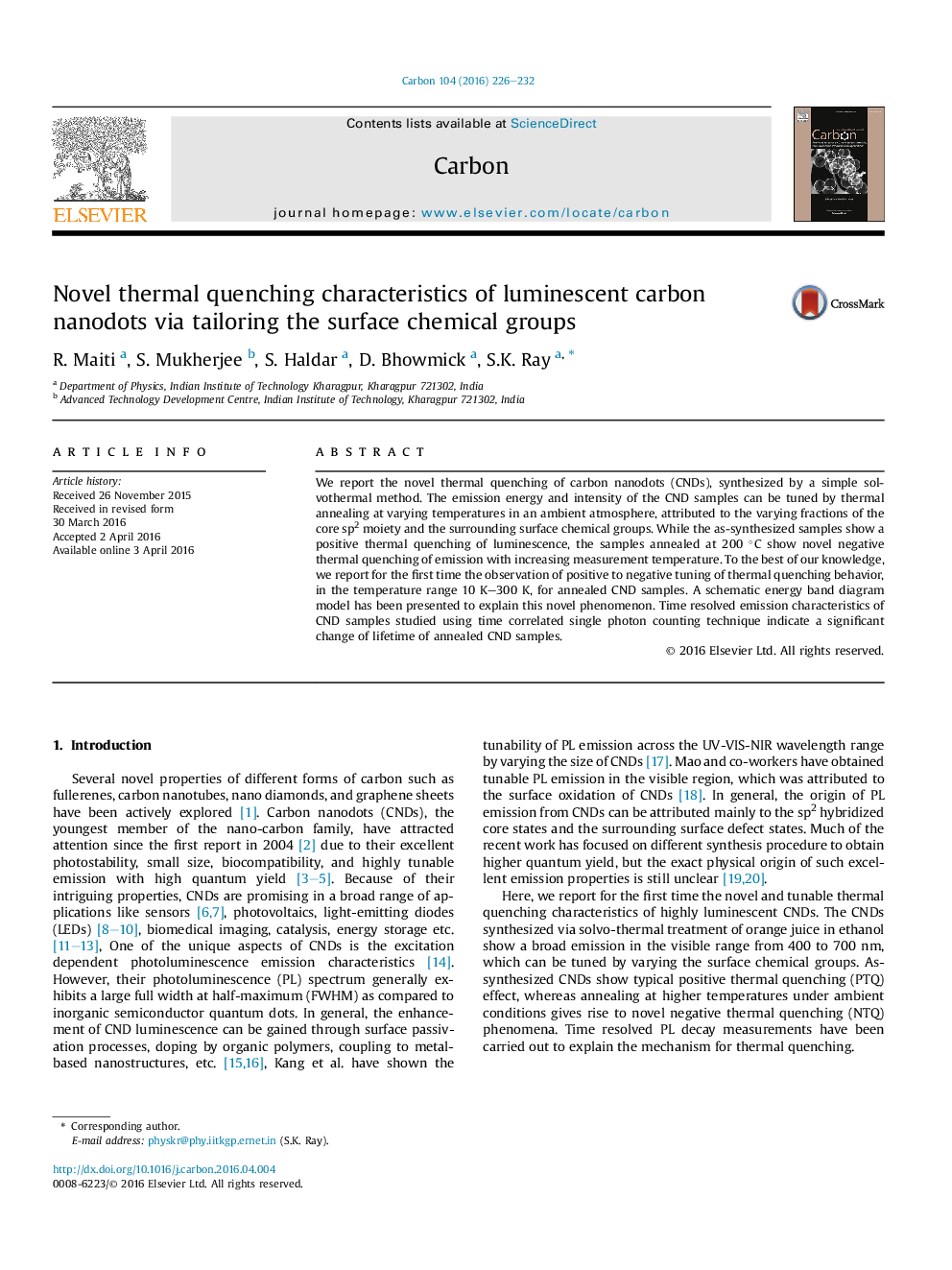| Article ID | Journal | Published Year | Pages | File Type |
|---|---|---|---|---|
| 7849607 | Carbon | 2016 | 7 Pages |
Abstract
We report the novel thermal quenching of carbon nanodots (CNDs), synthesized by a simple solvothermal method. The emission energy and intensity of the CND samples can be tuned by thermal annealing at varying temperatures in an ambient atmosphere, attributed to the varying fractions of the core sp2 moiety and the surrounding surface chemical groups. While the as-synthesized samples show a positive thermal quenching of luminescence, the samples annealed at 200 °C show novel negative thermal quenching of emission with increasing measurement temperature. To the best of our knowledge, we report for the first time the observation of positive to negative tuning of thermal quenching behavior, in the temperature range 10 K-300 K, for annealed CND samples. A schematic energy band diagram model has been presented to explain this novel phenomenon. Time resolved emission characteristics of CND samples studied using time correlated single photon counting technique indicate a significant change of lifetime of annealed CND samples.
Related Topics
Physical Sciences and Engineering
Energy
Energy (General)
Authors
R. Maiti, S. Mukherjee, S. Haldar, D. Bhowmick, S.K. Ray,
